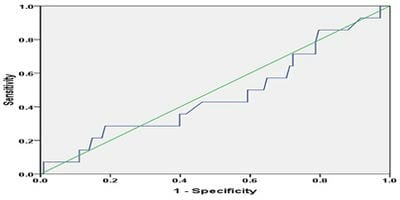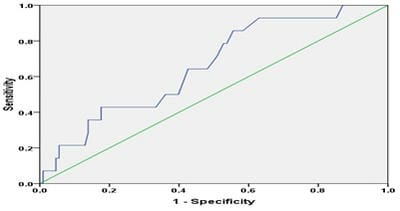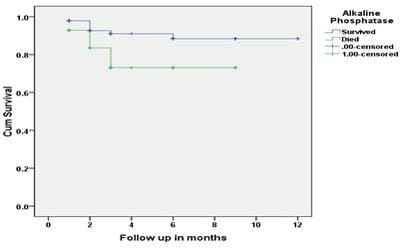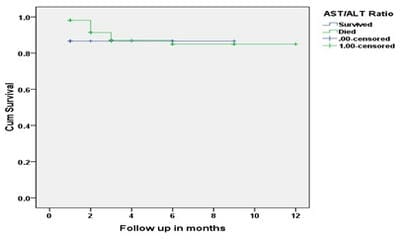Pre-treatment de-ritis ratio as a marker for cervical cancer: a study at regional cancer centre
Kumar S.1*, Ramesh G.2, Roy M.3, Nelson N.4, Govardhan.5, Khaleel.6, Pallavi R.7
DOI: https://doi.org/10.17511/ijmrr.2019.i03.03
1* Sandeep Kumar, Assistant Professor, Department of Gynaecological Oncology, Kidwai Memorial Institute of Oncology, Bengaluru, Karnataka, India.
2 Ramesh G., Professor, Department of Biochemistry, Kidwai Memorial Institute of Oncology, Bengaluru, Karnataka, India.
3 Manisha Roy, Research Fellow, Department of Radiation Oncology, Kidwai Memorial Institute of Oncology, Bengaluru, Karnataka, India.
4 Nupur Nelson, Research Fellow, Department of Radiation Oncology, Kidwai Memorial Institute of Oncology, Bengaluru, Karnataka, India.
5 Govardhan, Assistant Professor, Department of Radiation Oncology, Kidwai Memorial Institute of Oncology, Bengaluru, Karnataka, India.
6 Khaleel, Assistant Professor, Department of Radiation Oncology, Kidwai Memorial Institute of Oncology, Bengaluru, Karnataka, India.
7 Pallavi R., Professor, Department of Gynaecological Oncology, Kidwai Memorial Institute of Oncology, Bengaluru, Karnataka, India.
Background: The role of AST/ALT ratio in prognostication of cancer cervix is not established in different study settings except for very few where they have highlighted on circulation of higher levels of AST and ALT in the cervical cancer patients. Moreover, there is a biological plausibility explained in one of the studies hence the study was conducted to elicit if the AST/ALT ratio could predict the prognosis of advanced cancer cervix before the initiation of treatment. Methodology: A follow up study was conducted among 122 newly diagnosed locally advanced carcinoma cervix patients in a regional cancer centre Bangalore from June 2015 to May 2018. All the basic data, normal and abnormal levels of serum Aspartate transaminase (AST), Alanine transaminase (ALT) and AST/ALT ratio were collected, followed up for one year and compared for overall survival using Log-rank test along with Kaplan-Meir curves. Receiver Operator Characteristic curves (ROC curves) were plotted to determine the poor outcome (death). Results: The mean age of the study participants was 50.4±10.6 years. Mean follow up period was 4±3 months (1-12 months). Median serum AST, ALT and de-ritis ratio did not differ among the different stages of cervical cancer. Area under the curve (AUCs) for de-ritis ratio was found to be not significant with very poor accuracy (AUC = 0.47;P> 0.05). It was observed that there was no statistically significant difference between the groups in their survival rates. Conclusion: AST/ALT ratio cannot predict the prognosis of advanced cancer cervix before the initiation of treatment.
Keywords: Cervical cancer, De-ritis ratio, Prognostic marker
| Corresponding Author | How to Cite this Article | To Browse |
|---|---|---|
| , Assistant Professor, Department of Gynaecological Oncology, Kidwai Memorial Institute of Oncology, Bengaluru, Karnataka, India. Email: |
Kumar S, Ramesh G, Roy M, Nelson N, Govardhan, Khaleel, Pallavi R. Pre-treatment de-ritis ratio as a marker for cervical cancer: a study at regional cancer centre. Int J Med Res Rev. 2019;7(3):162-169.
Available From https://ijmrr.medresearch.in/index.php/ijmrr/article/view/1054 |


 ©
© 


